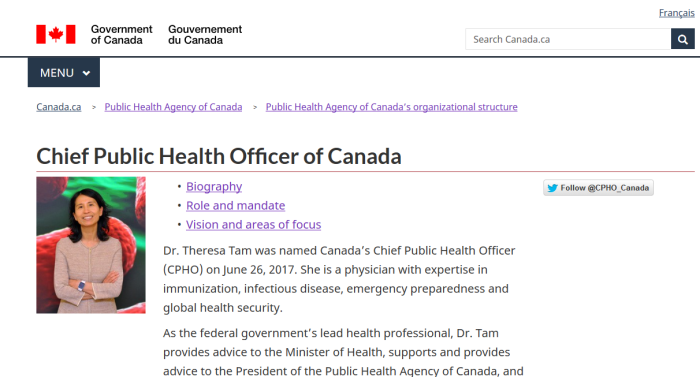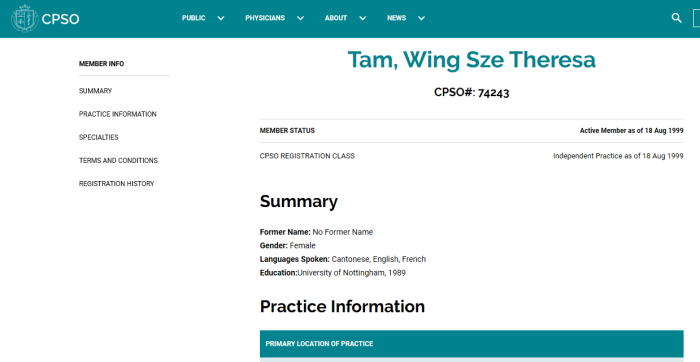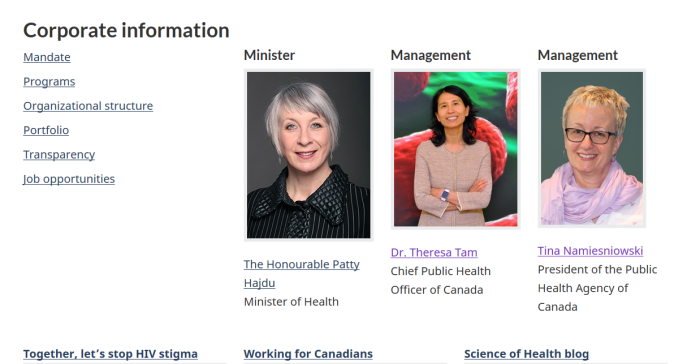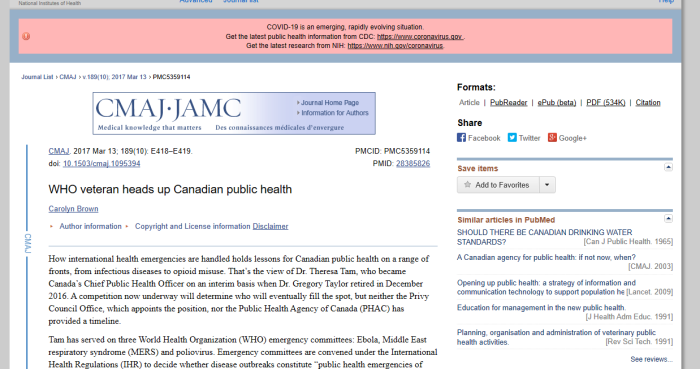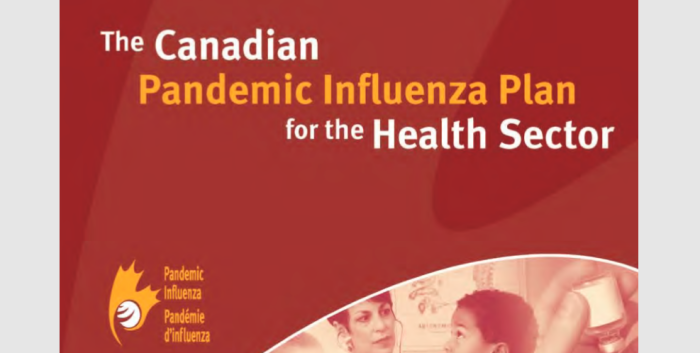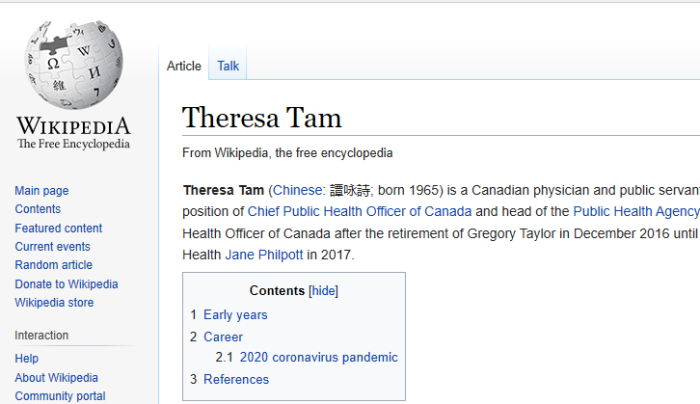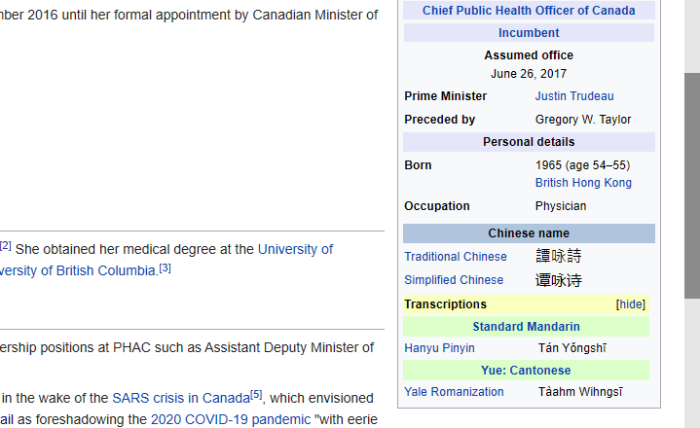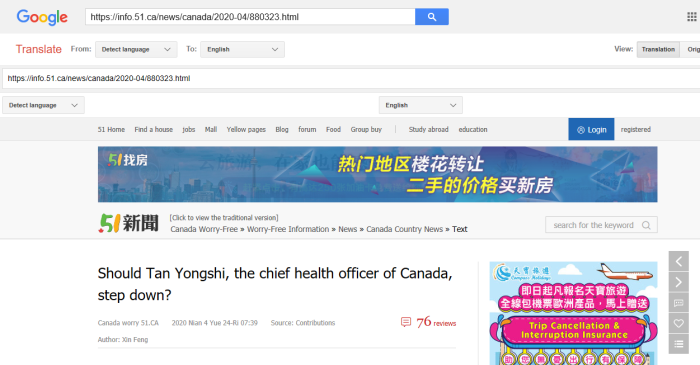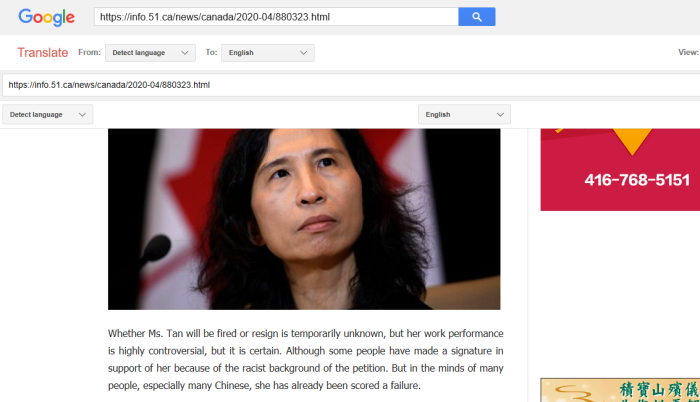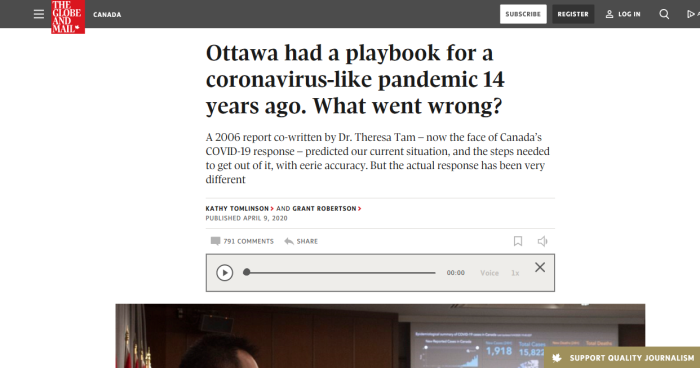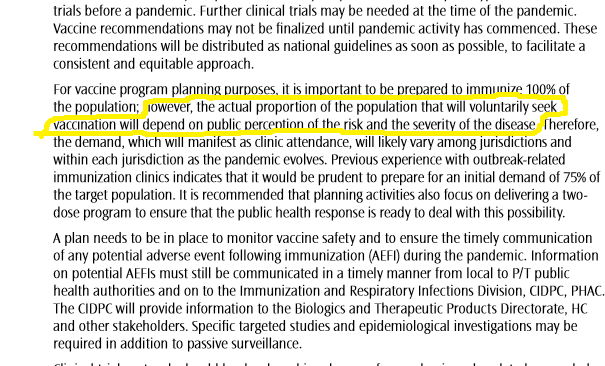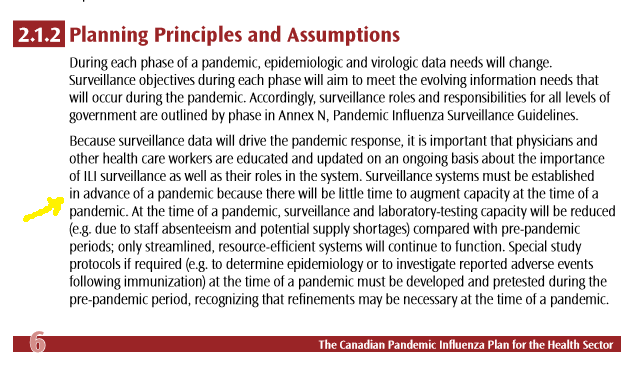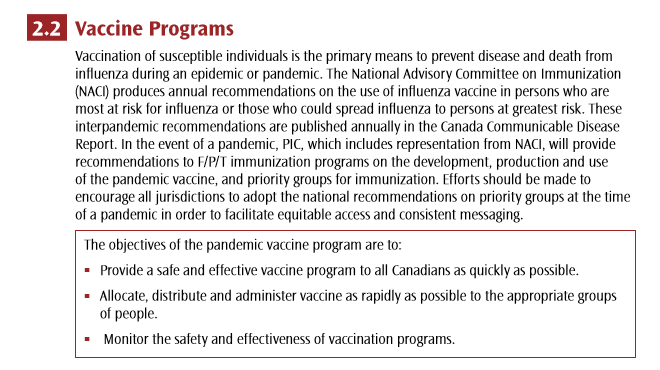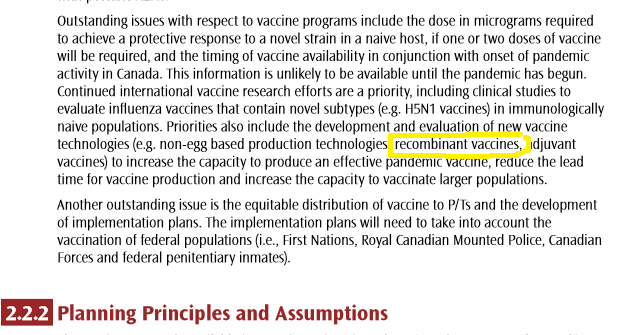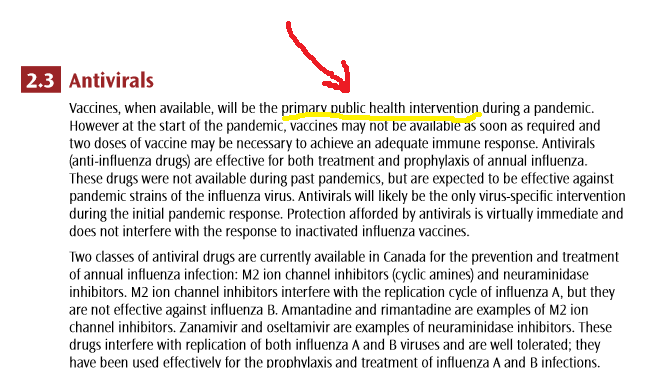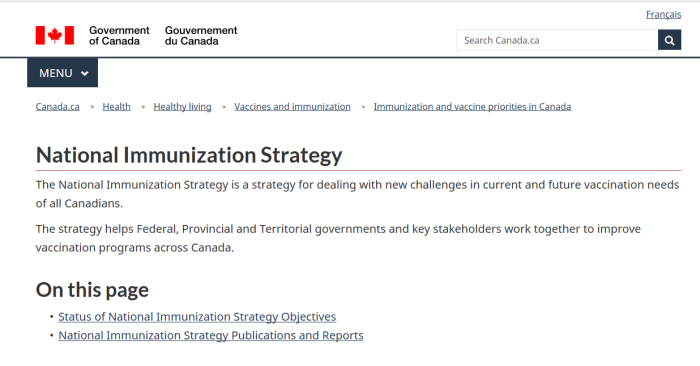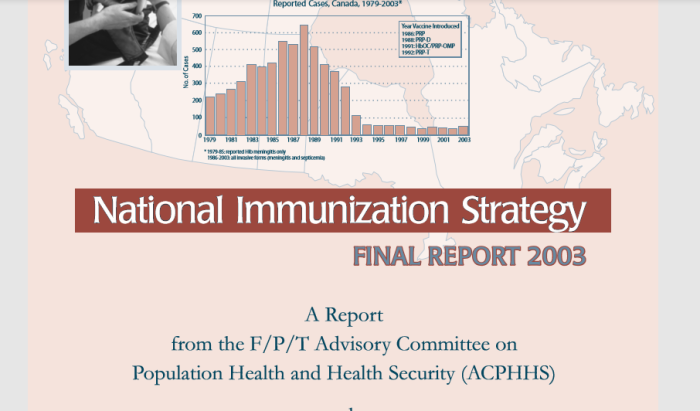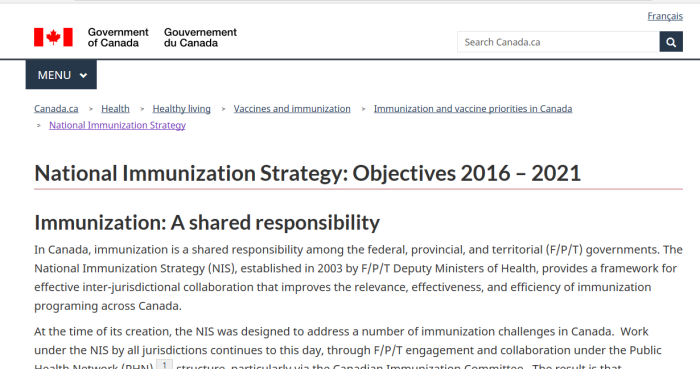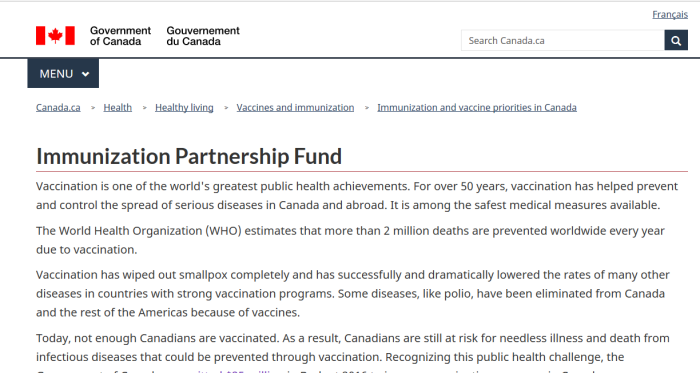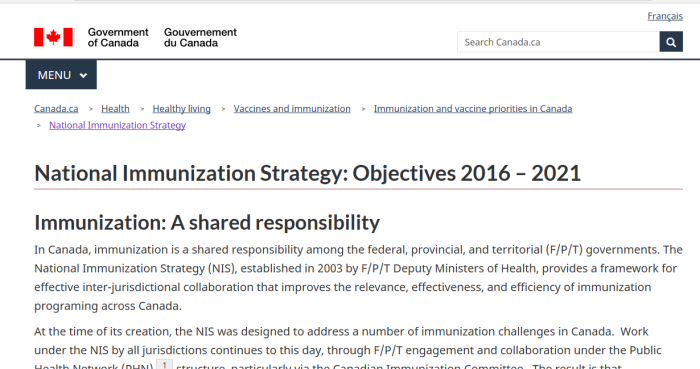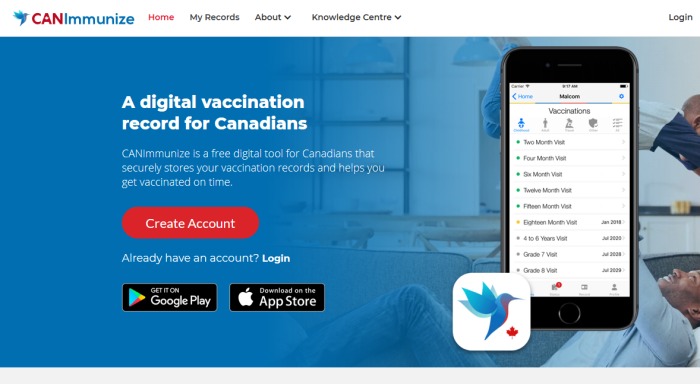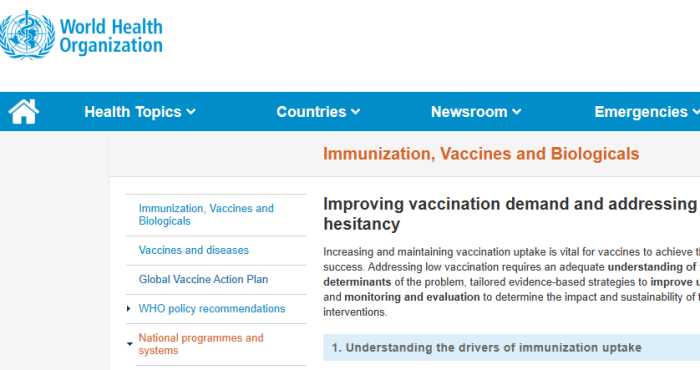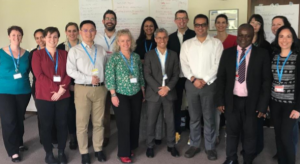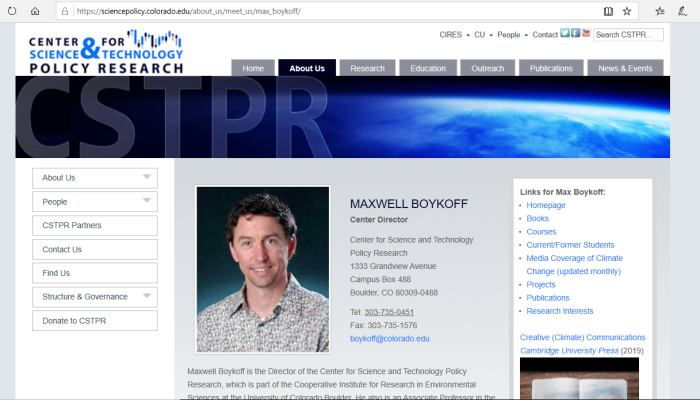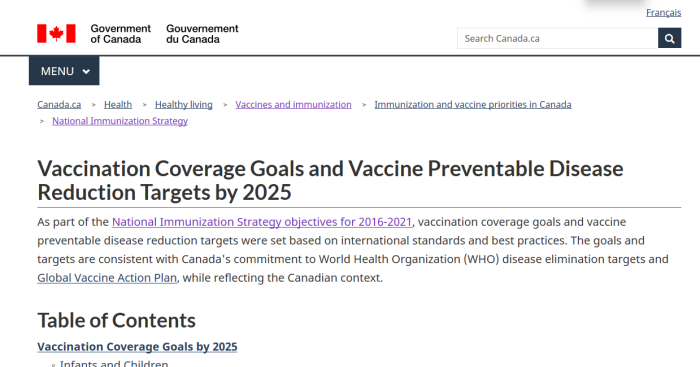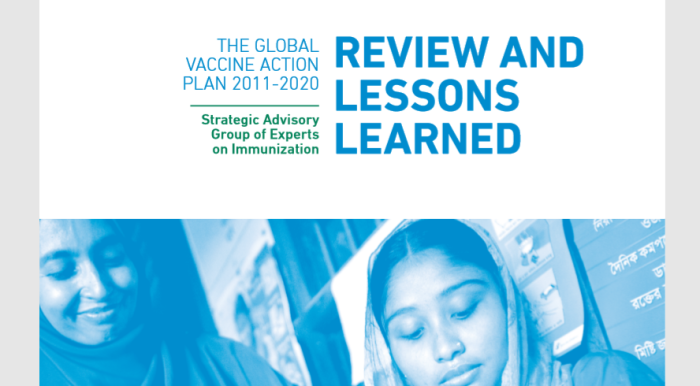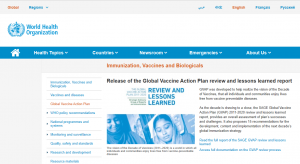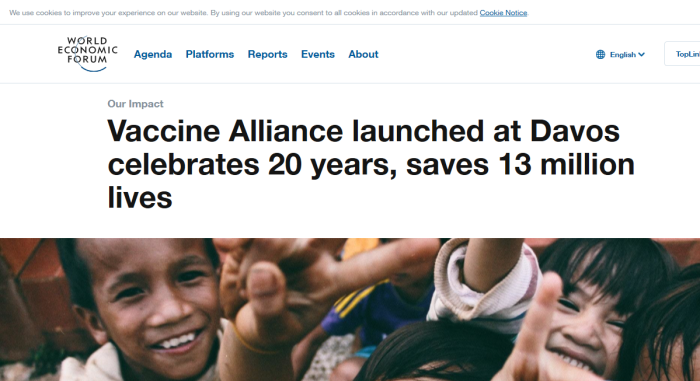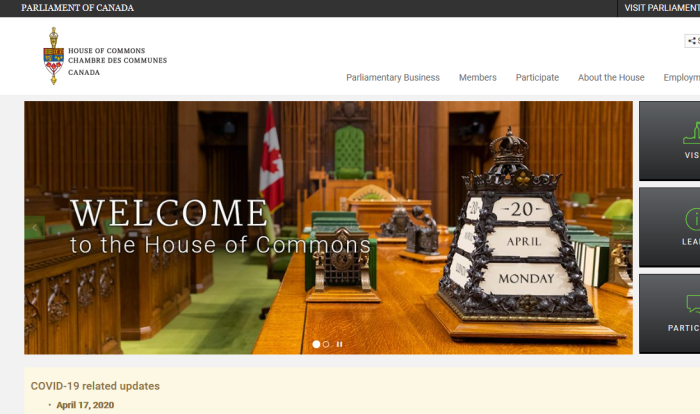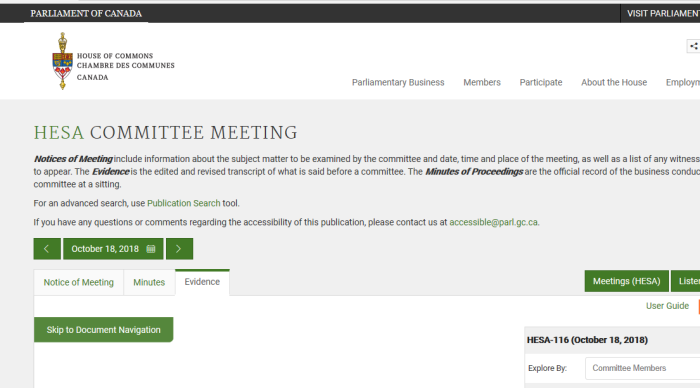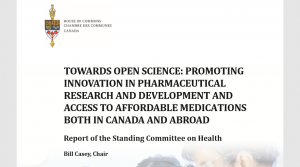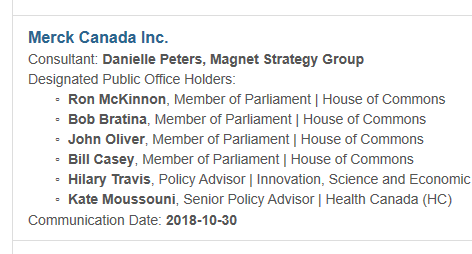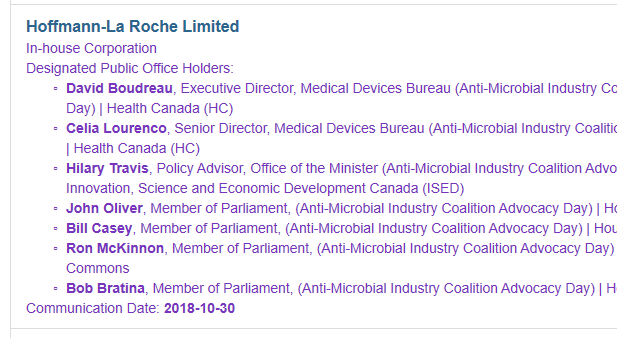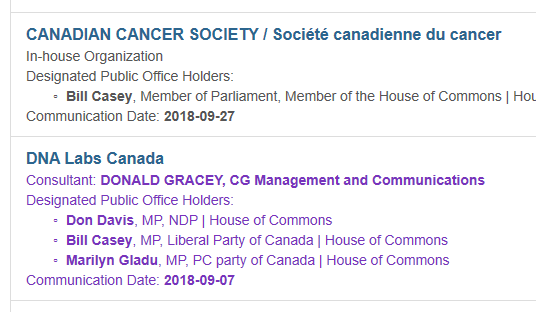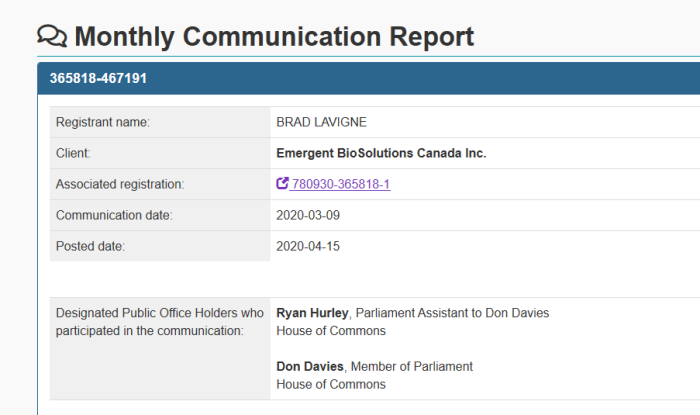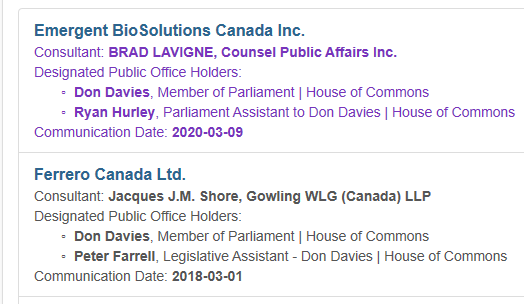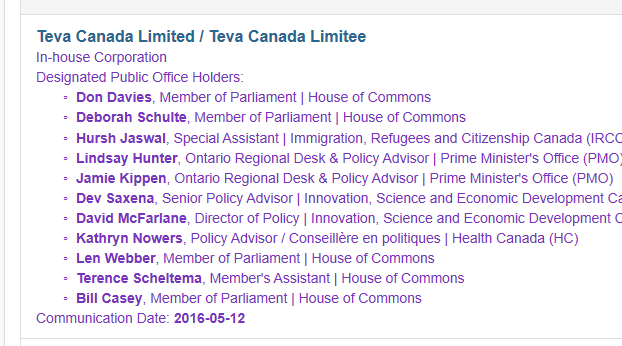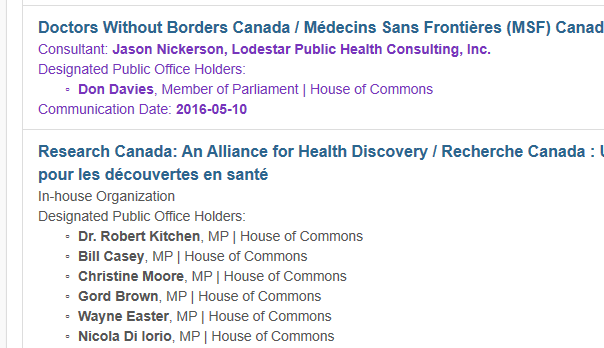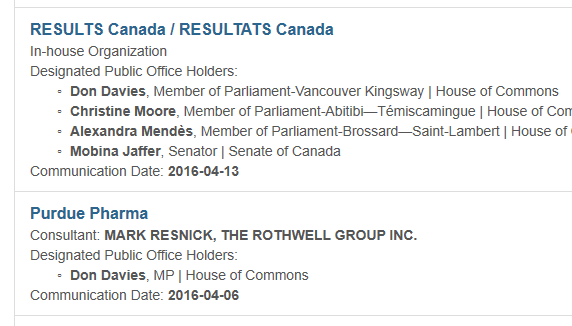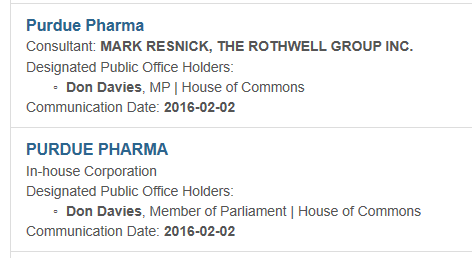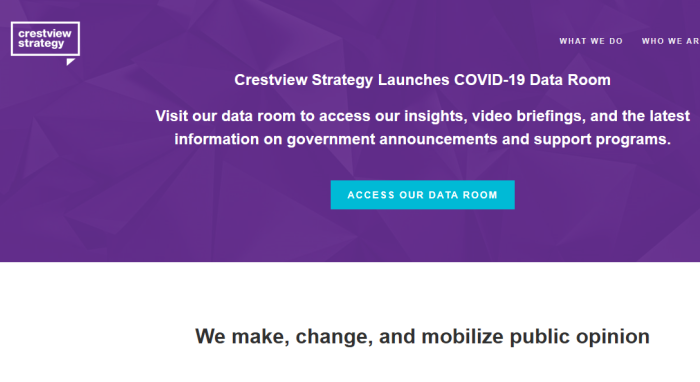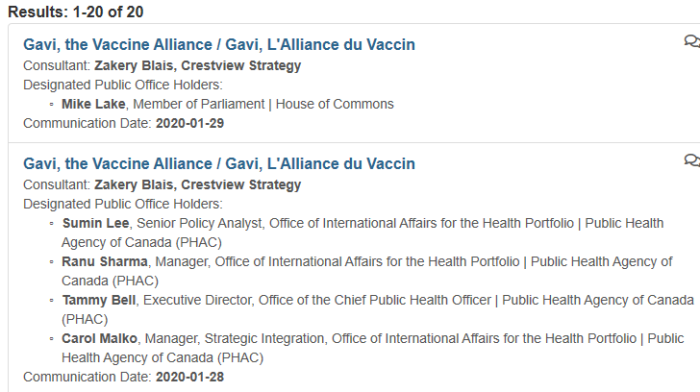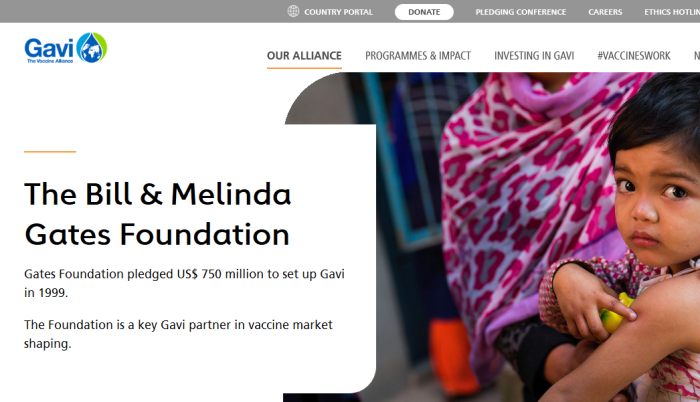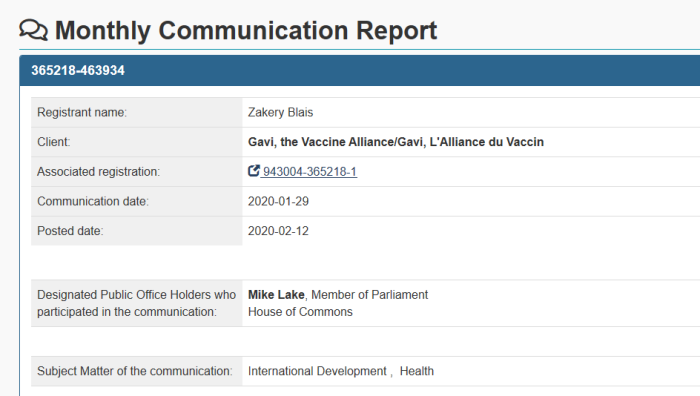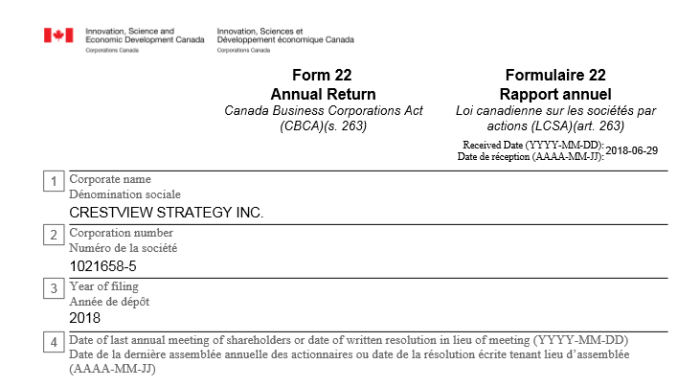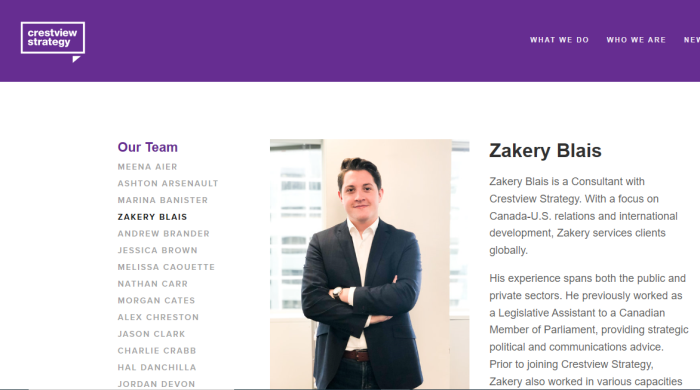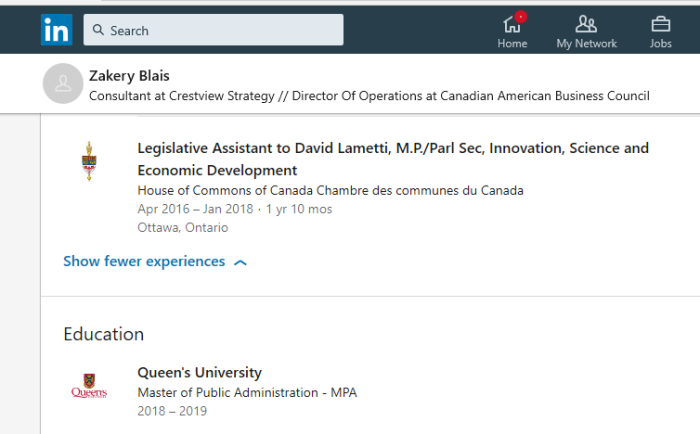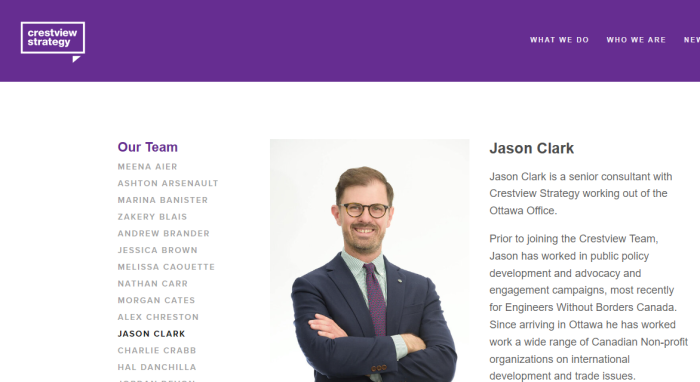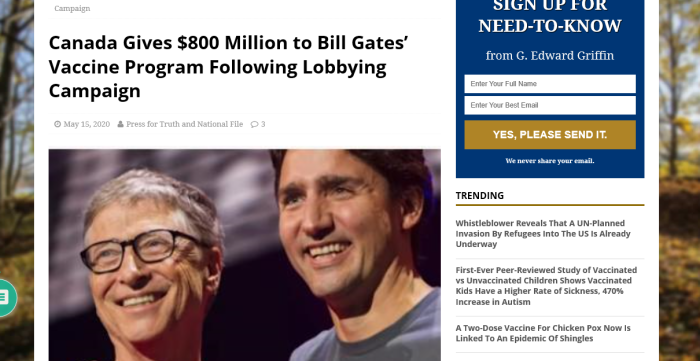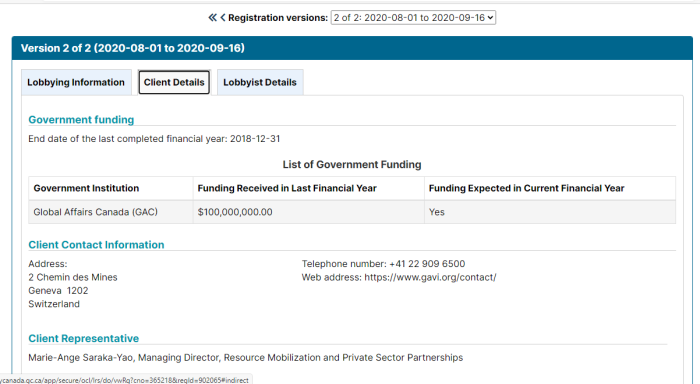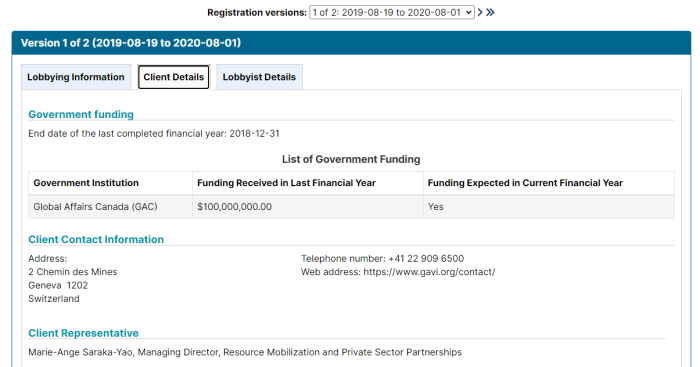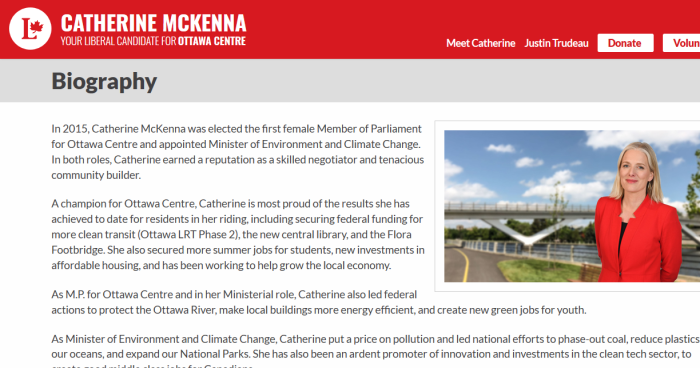
1. Important Links
(1) http://catherinemckenna.liberal.ca/biography/
(2) http://catherinemckenna.ca/site/2013/09/exciting-times-canadian-lawyers-abroad/
(3) http://archive.is/DYoQg
(4) https://canadianlawyersabroad.wordpress.com/
(5) http://archive.is/fqUPW
(6) https://canadianlawyersabroad.wordpress.com/author/canadianlawyersabroad/
(7) http://archive.is/UOSKe
(8) https://leveljustice.org/news
(9) http://archive.is/zWgkW
(10) https://canadianlawyersabroad.wordpress.com/2015/11/04/canadian-lawyers-abroad-goes-next-level-with-new-name-and-new-look/
(11) http://archive.is/OlXub
Some Posts Written By McKenna
(1) https://canadianlawyersabroad.wordpress.com/2010/10/14/so-whats-up-with-canadian-lawyers-abroad/
(2) http://archive.is/UdqBw
(3) https://canadianlawyersabroad.wordpress.com/2011/01/10/is-law-school-a-losing-game-in-canada-who-knows/
(4) http://archive.is/GbQ7q
(5) https://canadianlawyersabroad.wordpress.com/2011/01/11/revisiting-yet-again-the-question-of-what-to-do-with-articling/
(6) http://archive.is/A61RA
(7) https://canadianlawyersabroad.wordpress.com/2011/02/11/so-you-want-to-be-an-international-lawyer-part-1/
(8) http://archive.is/zzC2I
(9) https://canadianlawyersabroad.wordpress.com/2011/02/22/so-you-want-to-be-an-international-lawyer-part-2/
(10) http://archive.is/FwR2w
(11) https://canadianlawyersabroad.wordpress.com/2011/04/11/were-failing-our-children/
(12) http://archive.is/6D4ky
(13) https://canadianlawyersabroad.wordpress.com/2011/04/21/articling-and-the-2011-lsuc-bencher-election/
(14) http://archive.is/VBZ4U
(15) https://canadianlawyersabroad.wordpress.com/2011/06/10/canadian-lawyers-abroads-rights-of-spring-the-lowdown/
(16) http://archive.is/enUho
2. Context For This Article
When a person steps into public office, such as being a Member of Parliament, it is expected that they will have no other associations or obligations that will interfere with this role. They are expected to have no conflict of interest. For Ottawa MP Catherine McKenna, however, that is not the case.
She co-founded an NGO called Canadian Lawyers Abroad in 2006, which was aimed at getting Canadian law graduates to take on international matters. McKenna remained a director of this organization until the day of the 2015 election.
What does this group (whatever its name is) actually do? Looking at its profile, under the name Level Justice, it seems to focus on social justice and indoctrination for aspiring lawyers. Think of it as a sort of brainwashing movement, promoting a more globalist, or internationalist approach.
It also operates a student internship, where law students and graduates take on work abroad. This amounts to a summer or so or volunteer work abroad, working for NGOs. An interesting situation: even while running for office, Catherine McKenna was a director at an NGO, which tried to get law students to go work for other NGOs abroad. The annual reports do list where people have gone, but more information would have been nice on the work they do.
But looking at the reports issued, it seemed that this global internship was not the biggest focus. More efforts were spent on local initiatives.
3. “Candidate” McKenna Stayed On CLA Board
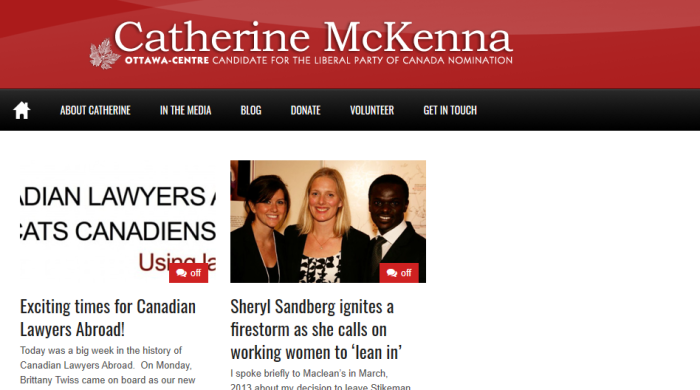
Today was a big week in the history of Canadian Lawyers Abroad. On Monday, Brittany Twiss came on board as our new Executive Director. The torch had officially passed from Yasmin Shaker and me, the CLA co-founders, to the next generation!
It is bittersweet to be leaving as ED of CLA (although I will still be on the board). I realize how lucky I have been to work with so many passionate and committed lawyers and law students who live up to CLA’s motto of using law to improve lives. We are lucky to count among our boosters (and my mentors) amazing leaders in the legal community including Allan Rock and Nathalie Des Rosiers (who very kindly gave us our first office at the University of Ottawa Faculty of Law), Bill Graham, Antonio Lamer, Ed Waitzer, Bob Rae, Greg Kane and Armand de Mestral. We also have thousands of law students who have come through our Student Chapter and Student Internship Programs who are now using their law degrees to build the rule of law and promote human rights in Canada and around the world.
McKenna remained on the Board of Canadian Lawyers Abroad, even though she was campaigning to become a Member of Parliament in the 2015 election. That page is from 2013, but it has to be asked: did McKenna remain on the Board after getting elected? Is she on the Board today? Is she using her position as an MP to push CLA’s agenda?
4. McKenna’s Posts On CLA Blog
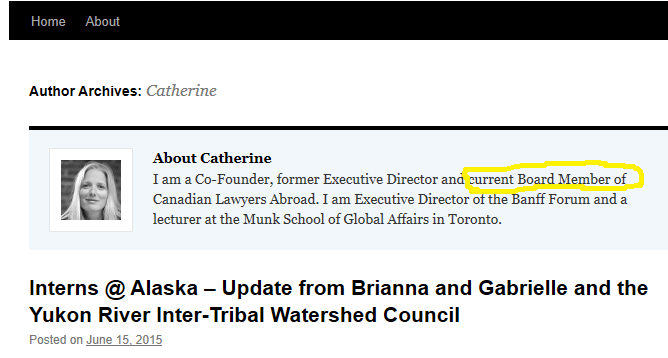
About Catherine
I am a Co-Founder, former Executive Director and current Board Member of Canadian Lawyers Abroad. I am Executive Director of the Banff Forum and a lecturer at the Munk School of Global Affairs in Toronto.
Here, Catherine McKenna describes in broad strokes what her organization is, and what it’s goals are. Again, she remained a board member while running for public office, which is a huge conflict of interest.
How? In two ways. First, we run a Student Program that brings together law students from across the country who are passionate about using their law degree to make positive changes around the world. CLA provides a forum for discussion and debate and, through our Summer Internship Program, we offer students the possibility of gaining practical experience with our amazing partners in developing countries and Canada’s north.
Second, we develop innovative projects with our partners that will lead to positive, long-term changes in their communities. For example, we’re helping the KNUST Faculty of Law in Ghana set up a university legal clinic. University legal clinics have been a very successful model in Canada and Canadian lawyers and law students are well-placed to provide assistance. This project will give KNUST law students practical, real-life training and provide marginalized groups, in particular women and youth, access to desperately needed legal information and services. In the long-term, by promoting the rule of law and protecting human rights, this project will help reduce poverty and promote economic development in Ghana. We plan on replicating this pilot project with other partners around the world.
This all sounds great, but when you are an elected MP in Ottawa (or any riding) your allegiance is to the people of that riding. Remaining part of this organization makes McKenna look compromised.
In another article, McKenna outlines how law school is becoming a losing game, as there are more graduates than positions in articling available. She actually has a valid point, and the situation in the United States is much worse. Could this be a way of swaying more lawyers to her cause?
5. CDN Lawyers Abroad A.K.A. Level Justice

In September 2015, Canadian Lawyers Abroad underwent a name change and overhauled its website. However, its indoctrination agenda seems to be pretty much the same, so the changes are more cosmetic.
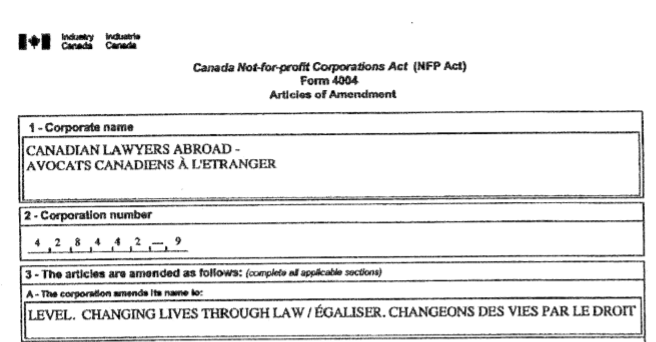

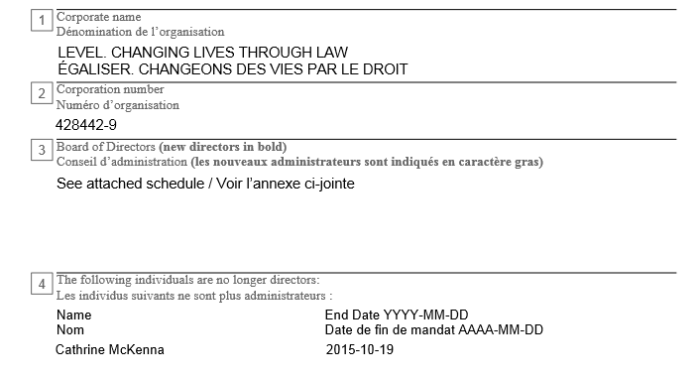
Level.Justice.Change.Of.Name
Level.Justice.2.Certificate.Of.Continuance.
Level.Justice.3.Bylaws.For.Organization
Level.Justice.4.Director.List.In.2014
Level.Justice.5.Change.Of.Corporate.Address
Level.Justice.6.Director.Change.October.2015.McKenna.Out
Looking at the corporate documents, it seems that Canadian Lawyers Abroad was renamed to LEVEL. CHANGING LIVES THROUGH LAW. It also looks like Catherine McKenna remained a Director at the organization until October 19, 2015. This was the day of the election which put her into office. Since there is no time listed, she may have only resigned after having won her seat.
6. CLA/Level Is Registered Charity
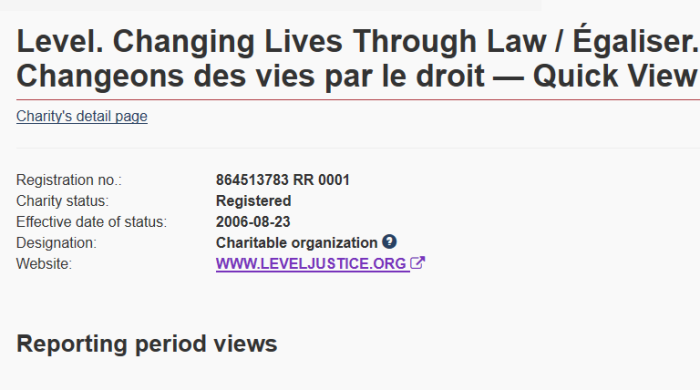
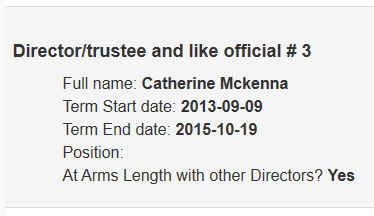
This is a bit confusing. McKenna stepped down as Executive Director in 2013. So, was she not considered a Director (according to the CRA) until this happened?
For Period Ending December 31, 2015
Receipted donations $82,191.00 (48.34%)
Non-receipted donations $0.00 (0.00%)
Gifts from other registered charities $81,039.00 (47.66%)
Government funding $0.00 (0.00%)
All other revenue $6,788.00 (3.99%)
Total revenue: $170,018.00
Charitable programs $97,086.00 (79.87%)
Management and administration $0.00 (0.00%)
Fundraising $8,868.00 (7.30%)
Political activities $0.00 (0.00%)
Gifts to other registered charities and qualified donees $0.00 (0.00%)
Other $15,597.00 (12.83%)
Total expenses: $121,551.00
Professional and consulting fees
$61,966.00
Note: There is no compensation listed for employees
For Period Ending December 31, 2016
Receipted donations $10,600.00 (7.54%)
Non-receipted donations $78,864.00 (56.07%)
Gifts from other registered charities $43,000.00 (30.57%)
Government funding $0.00 (0.00%)
All other revenue $8,200.00 (5.83%)
Total revenue: $140,664.00
Charitable programs $116,887.00 (90.23%)
Management and administration $12,652.00 (9.77%)
Fundraising $0.00 (0.00%)
Political activities $0.00 (0.00%)
Gifts to other registered charities and qualified donees $0.00 (0.00%)
Other $0.00 (0.00%)
Total expenses: $129,539.00
Compensation
Total compensation for all positions
$72,746.00
Full-time employees (1)
Part-time employees (4)
Professional and consulting fees
$8,633.00
Compensated full-time positions:
$40,000 to $79,999 (1)
For Period Ending August 31, 2017
Receipted donations $0.00 (0.00%)
Non-receipted donations $110,300.00 (85.31%)
Gifts from other registered charities $18,992.00 (14.69%)
Government funding $0.00 (0.00%)
All other revenue $0.00 (0.00%)
Total revenue: $129,292.00
Expenses are listed as $163,006
Compensation
Total compensation for all positions
$96,529.00
Full-time employees (3)
Professional and consulting fees
$5,861.00
Compensated full-time positions:
$1 to $39,999 (2)
$40,000 to $79,999 (1)
For Period Ending August 31, 2018
Receipted donations $6,790.00 (1.71%)
Non-receipted donations $260,938.00 (65.58%)
Gifts from other registered charities $130,131.00 (32.71%)
Government funding $0.00 (0.00%)
All other revenue $28.00 (0.01%)
Total revenue: $397,887.00
Charitable programs $288,133.00 (91.80%)
Management and administration $25,747.00 (8.20%)
Fundraising $0.00 (0.00%)
Political activities $0.00 (0.00%)
Gifts to other registered charities and qualified donees $0.00 (0.00%)
Other $0.00 (0.00%)
Total expenses: $313,880.00
Compensation
Total compensation for all positions
$220,568.00
Full-time employees (3)
Professional and consulting fees
$12,006.00
Compensated full-time positions:
$40,000 to $79,999 (1)
$80,000 to $119,999 (2)
For Period Ending August 31, 2019
Receipted donations $10,000.00 (2.96%)
Non-receipted donations $156,492.00 (46.30%)
Gifts from other registered charities $171,448.00 (50.73%)
Government funding $0.00 (0.00%)
All other revenue $25.00 (0.01%)
Total revenue: $337,965.00
Charitable programs $220,726.00 (89.76%)
Management and administration $25,171.00 (10.24%)
Fundraising $0.00 (0.00%)
Gifts to other registered charities and qualified donees $0.00 (0.00%)
Other $0.00 (0.00%)
Total expenses: $245,897.00
Compensation
Total compensation for all positions
$168,747.00
Full-time employees (3)
Professional and consulting fees
$13,524.00
Compensated full-time positions:
$40,000 to $79,999 (3)
7. Little Info On Elections Canada Site

A quick search into the financing section of Elections Canada shows very little. In fact, as of the time of writing this, there are 21 donations total with McKenna’s name on them. Most are for a few hundred dollars. So McKenna hasn’t been getting large donations from various groups.
8. Global Internship Program
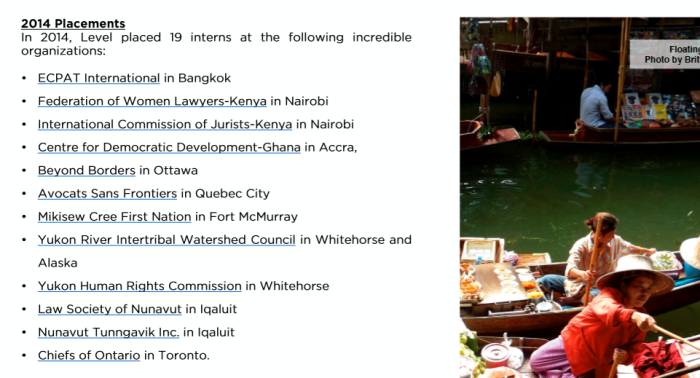
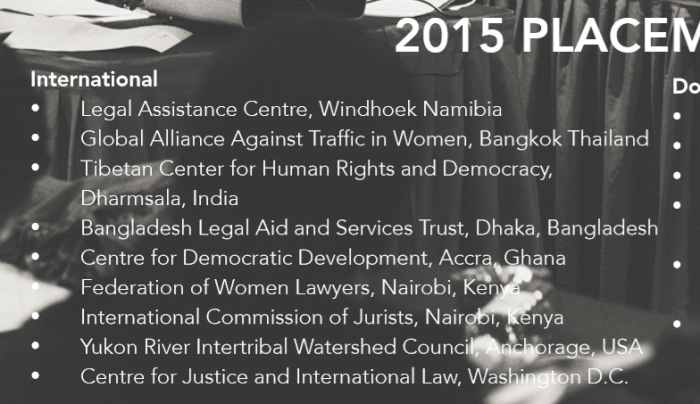

In summer 2016, Level placed 20 student interns with NGOs in Canada, the US, Ghana, Namibia, Kenya, Thailand, India and Bangladesh, where they gained practical human rights research and advocacy experience. While Level has made the difficult decision this year to shift its focus to local and remote internship opportunities, we are proud to have facilitated international internships for over 220 students since 2005. I would like to take this opportunity to thank our amazing partners for their support of our student initiatives, and their commitment to making justice a reality for some of the world’s most vulnerable populations.
Focused on an annual theme, Level’s Chapters organize community events, host conferences and panel discussions, and contribute research papers to an annual human rights journal. In 2016-17, our Chapters advanced awareness of women’s human rights both in Canada and abroad, and encouraged their peers to think critically about how they can use their budding legal skills to make a positive impact in their communities.
Through our Global Internship Program, 20 passionate and talented JD/LLB students spent the summer working for NGOs in Canada or overseas supporting grassroots efforts to increase access to justice and combat poverty, inequality and exploitation. Since 2005, over 220 students have advanced the mission of 45 organizations in 15 countries, while at the same time developing practical skills to advance their careers.
The quotes are from the annual 2016 report.
LJ.2014.annual.report
LJ.2015.annual.report
LJ.2016.annual.report
LJ.2018.annual.report
2014 through 2018 are available currently on the website.
On a serious note: one has to wonder how effective these students and new graduates would actually be. Not only would they have little to no experience in Canada, how could they contribute in countries where the culture and language are very different? How would they be able to operate in areas that might be highly suspicious of Westerners?
9. What This Group Does
From the looks of things, Canadian Lawyers Abroad, now called “Level Changing Lives Through The law”, or as “Level Justice”, runs a bunch of advocacy programs in Canada. The focus is on a social justice approach on crime, law, and access to representation.
The group has a “global internship program” which encourages law students and/or law school graduates to go abroad working for NGOs of other organizations. While the places are listed, it would be nice to know more about what these aspiring lawyers are in fact doing.
However, it appears that the bulk of the work has to do with domestic initiatives within Canada. That may explain the name change, as “Canadian Lawyers Abroad” left the impression that it was the bulk of their work.
Within Canada, it does seem to be focused on pitching the notion that poverty, racism and intolerance is what keeps people from getting access to justice. On the surface, this group seems to be noble and benevolent, though it views everything through the social justice lens.

